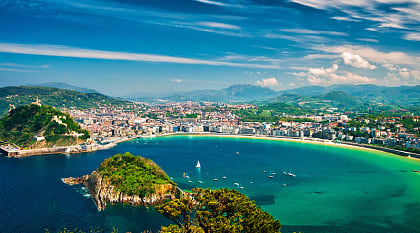March through May and September through November are generally the best times to visit Spain as the weather is warm, travel rates are great, and there are fewer crowds than in the summer months of June, July, and August.
From March through May and September through November you can enjoy hiking across the Dolomites, sightseeing along the Basque Country coastline, and wine tasting in Andalusia. They are also excellent times of the year for grape harvesting with your partner, city tours with your family, or adventures across the Spanish countryside for seniors.
Although clear skies dominate June, July, and August, the temperatures in Spain during summer reach all-year highs. You should only visit at this time of year if you are comfortable navigating the crowds that flock to Spain’s Mediterranean coast and famous cities, and can bear the heat.
Learn more: Best Time to Visit Spain • Best Time To Visit Barcelona








